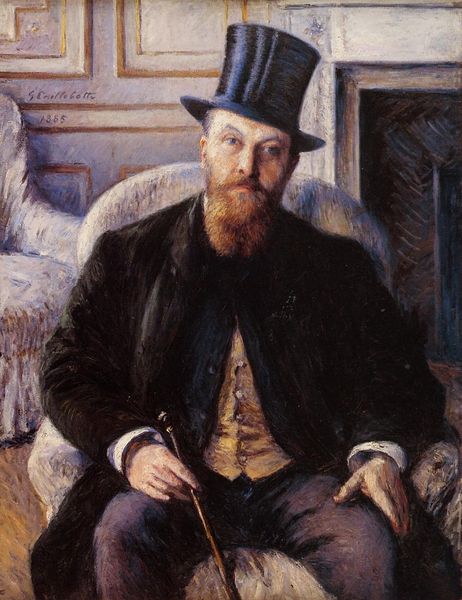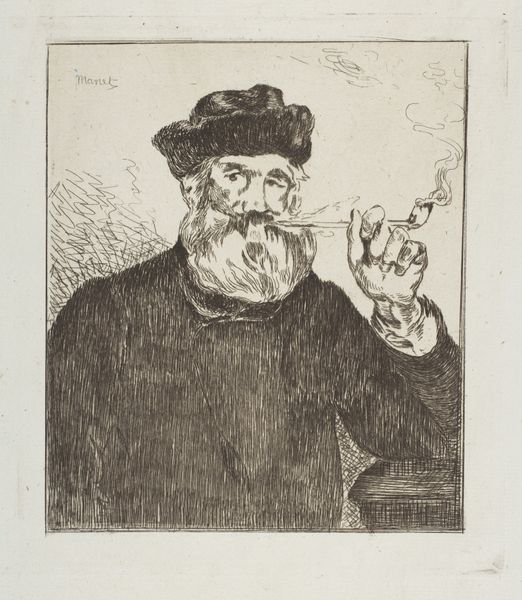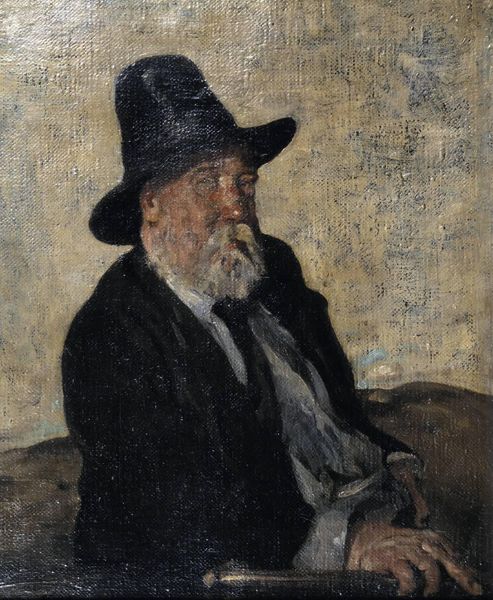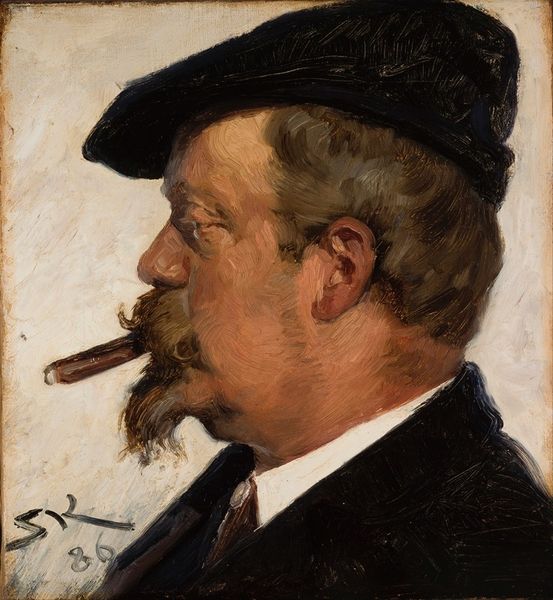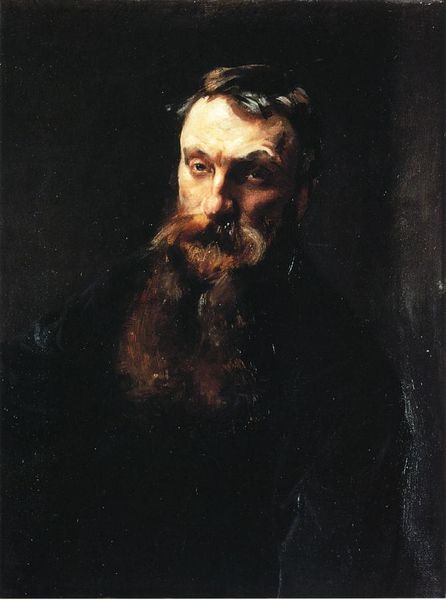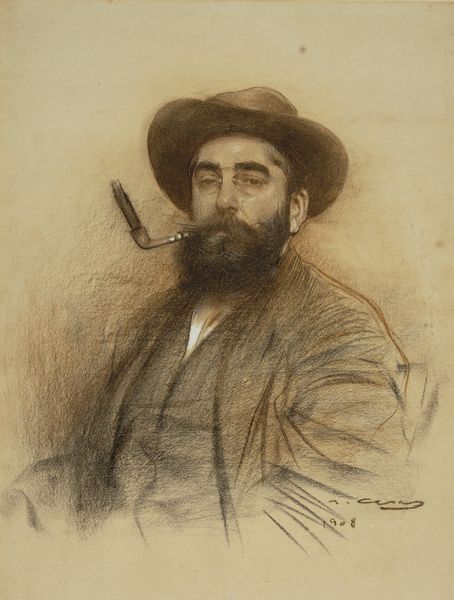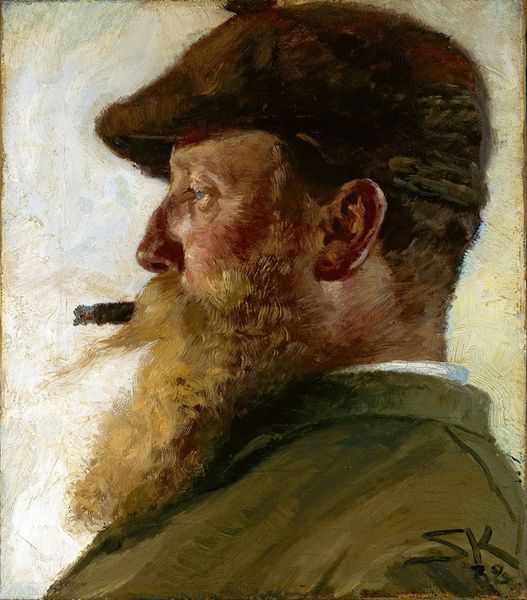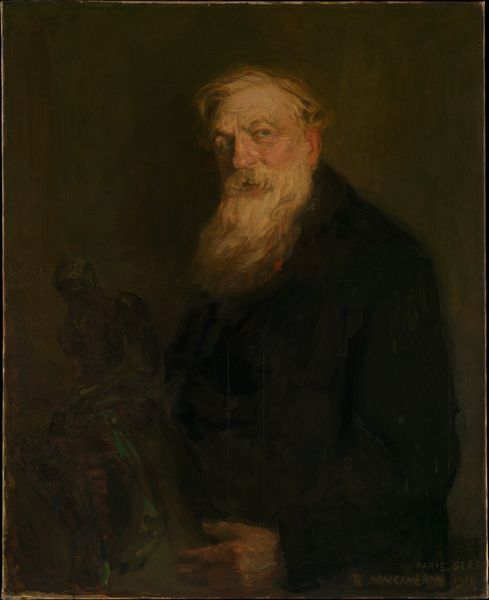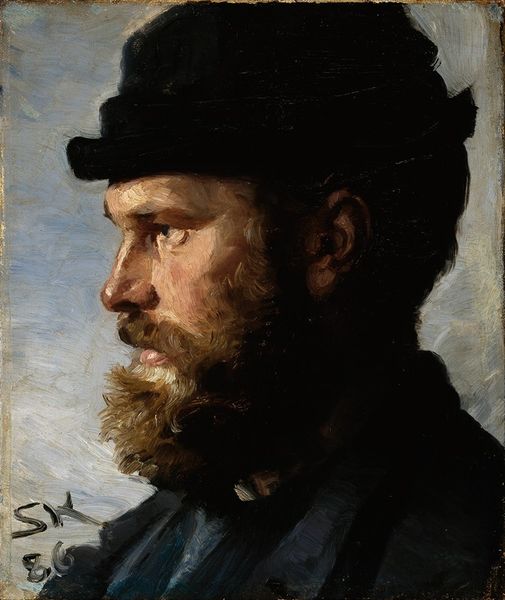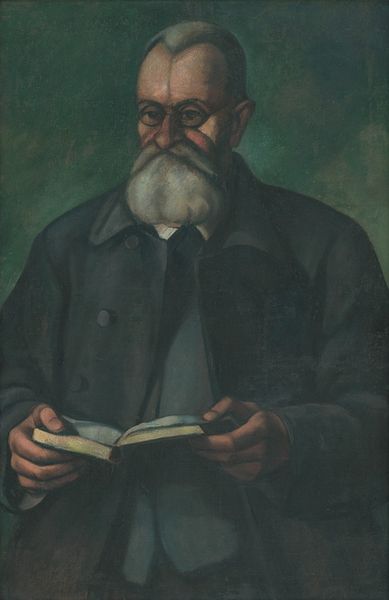
painting, oil-paint, oil-on-canvas
#
portrait
#
portrait
#
painting
#
impressionism
#
oil-paint
#
genre-painting
#
oil-on-canvas
Dimensions: 39 1/2 x 32in. (100.3 x 81.3cm)54 x 46 1/2 x 5 in. (137.16 x 118.11 x 12.7 cm) (outer frame)
Copyright: Public Domain
Editor: So here we have Édouard Manet’s “The Smoker,” painted in 1866 with oil on canvas. The overall impression I get is one of subdued contemplation. There’s a quietness in the composition and color palette that’s quite striking. What do you see in this piece? Curator: Let’s consider the formal elements. Notice how Manet uses a limited range of tones, predominantly blacks and browns, establishing a certain visual restraint. Observe how the smoke acts almost as a counterpoint, its ethereal quality juxtaposing the sitter's grounded presence. What effect does the asymmetry create, particularly with the placement of the figure off-center? Editor: I hadn't thought about the asymmetry. I suppose it makes the painting less static, more like a snapshot of a real person. Do you think the starkness contributes to the emotional impact? Curator: Indeed. The lack of decorative detail compels the viewer to concentrate on the subject himself. The painting’s emotionality is constructed from a study of form and composition, not sentimental narrative. How do you perceive the relationship between the rough, expressive brushstrokes and the figure’s sense of stillness? Editor: That's a fascinating point. There's this contrast between the loose handling of the paint and the very still, almost stoic pose of the man. I see that the material qualities, the paint itself, adds another layer to the meaning. Curator: Precisely. Manet is foregrounding the act of painting itself, not merely representation. He emphasizes how form generates content, which in turn activates affect. Editor: I see now. So, it's the interplay of the muted colors, the compositional asymmetry, and the brushwork that gives the painting its contemplative mood. Curator: Yes. By understanding the painting's internal mechanics, we move closer to grasping its aesthetic achievement. Editor: I’ve certainly learned to appreciate Manet’s focus on structure and form to create something so moving. Thank you for that! Curator: It has been my pleasure. I appreciate your engagement with Manet’s manipulation of visual language.
Comments
minneapolisinstituteofart about 2 years ago
⋮
This working-class character was one of many ordinary Parisians painted by Manet in the 1860s. A year before making this portrait, Manet had traveled to Madrid, Spain, where he was reportedly "enchanted" by the naturalistic depictions of common people painted by Diego Velásquez in the 1600s. Manet emulated the Spanish master in his own series of everyday scenes while adding a modern twist: elevating the images to the impressive scale of a formal portrait. This is a Louis XIV revival frame from the nineteenth century, a Gift of the Douglas and Mary Olson Frame Acquisition Fund. Frames of this style are characterized by their leaf and floral motif. Here these sculptural elements appear to be growing and reaching beyond the frame.
Join the conversation
Join millions of artists and users on Artera today and experience the ultimate creative platform.
